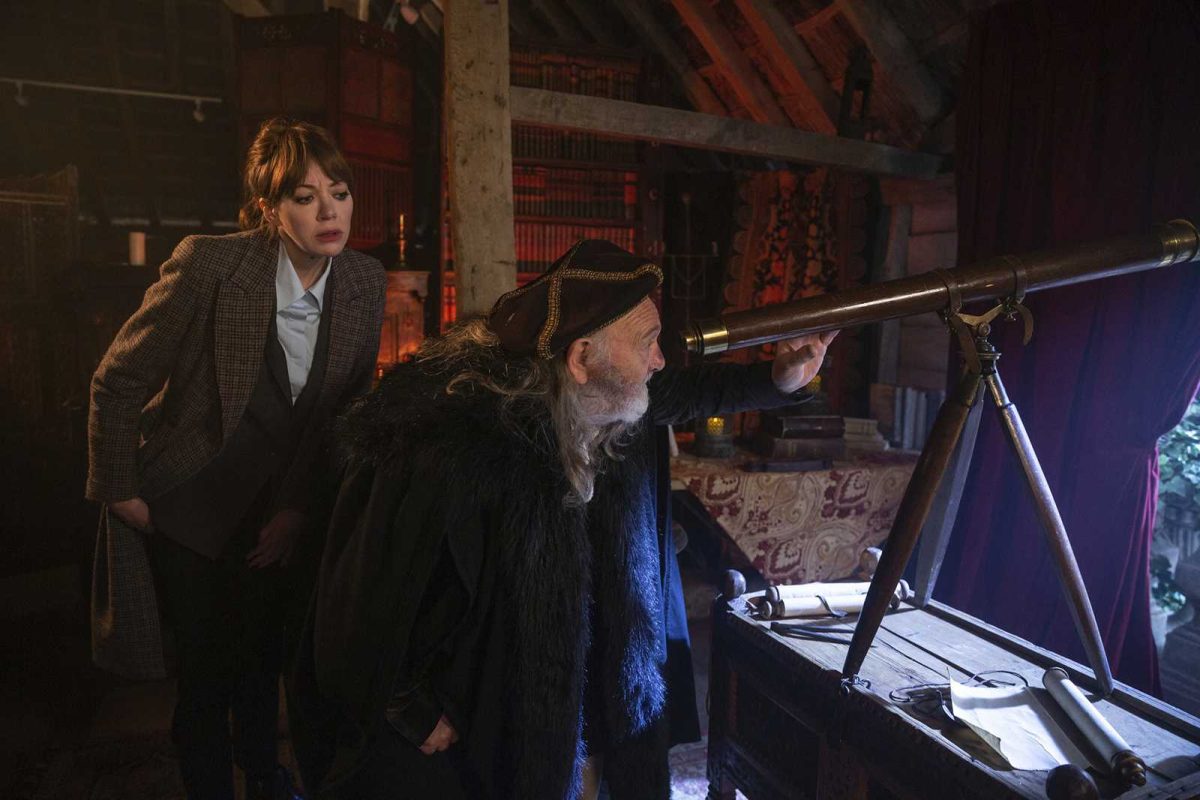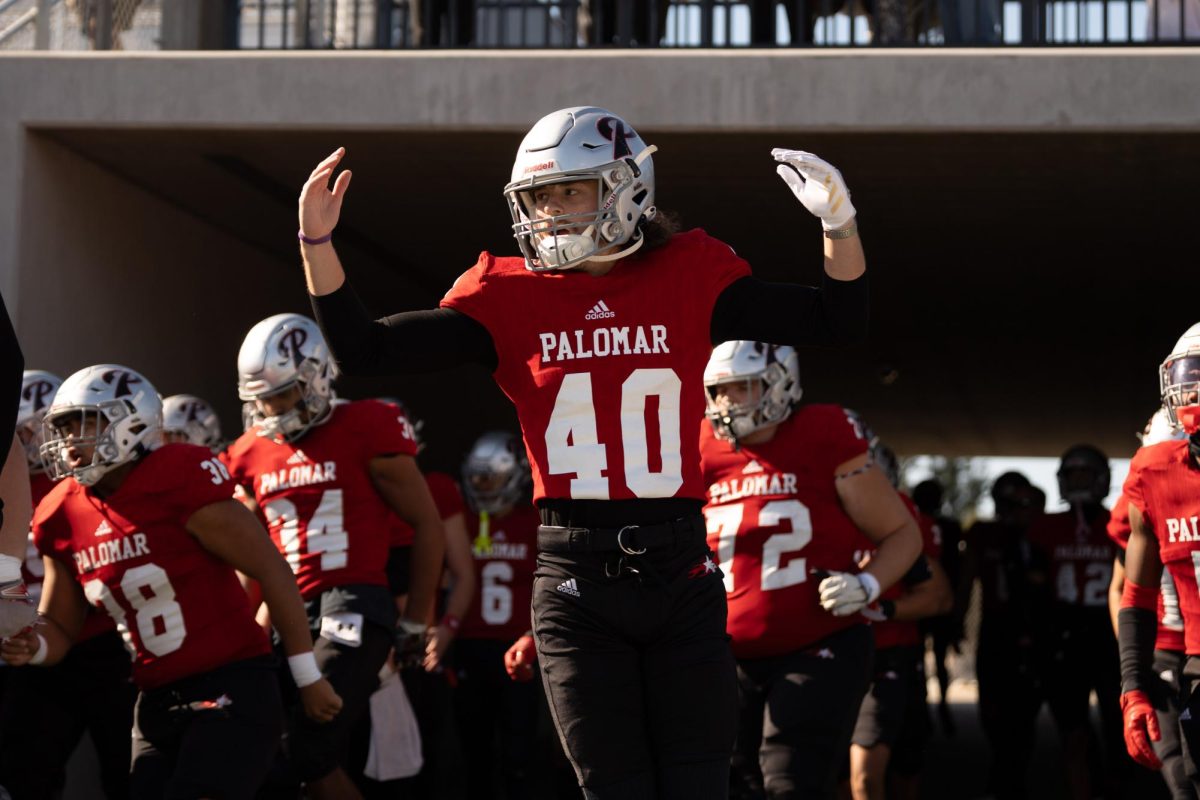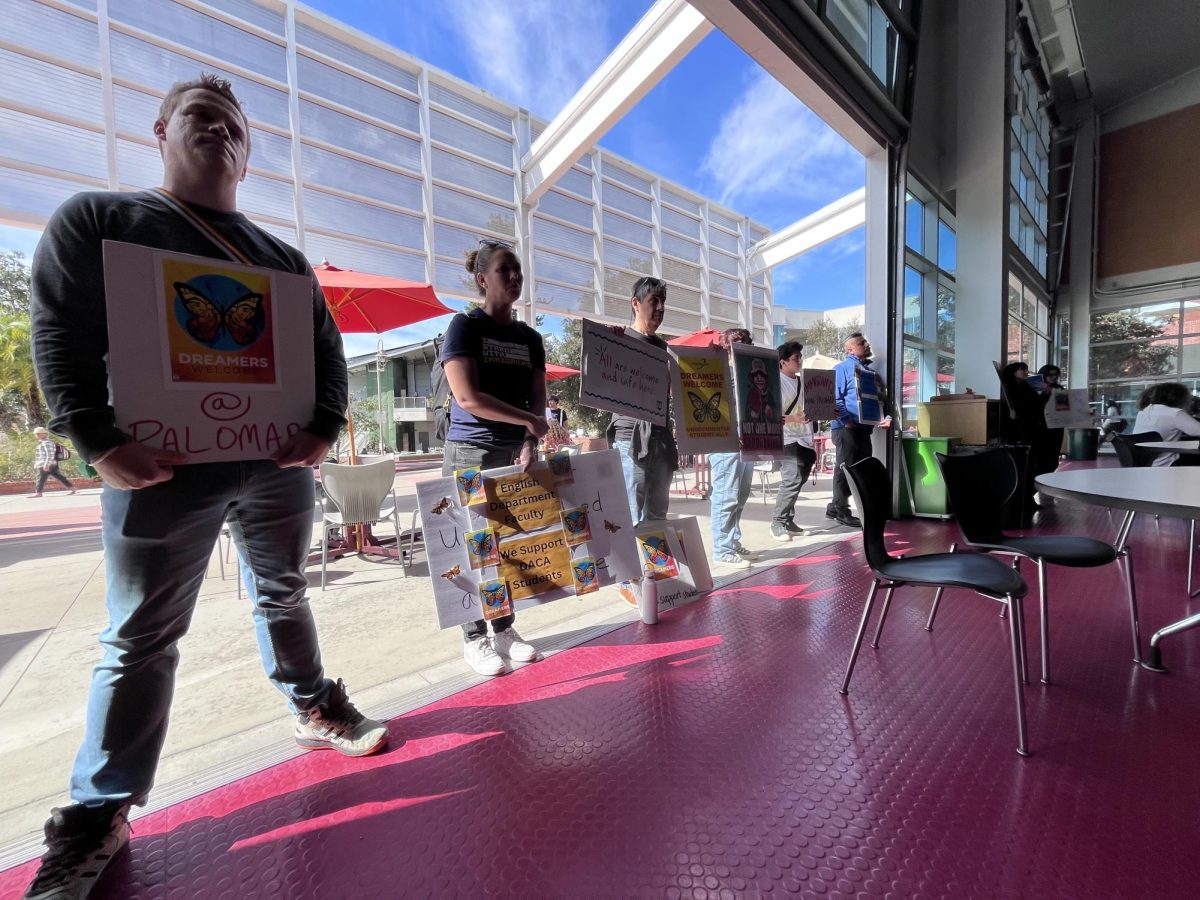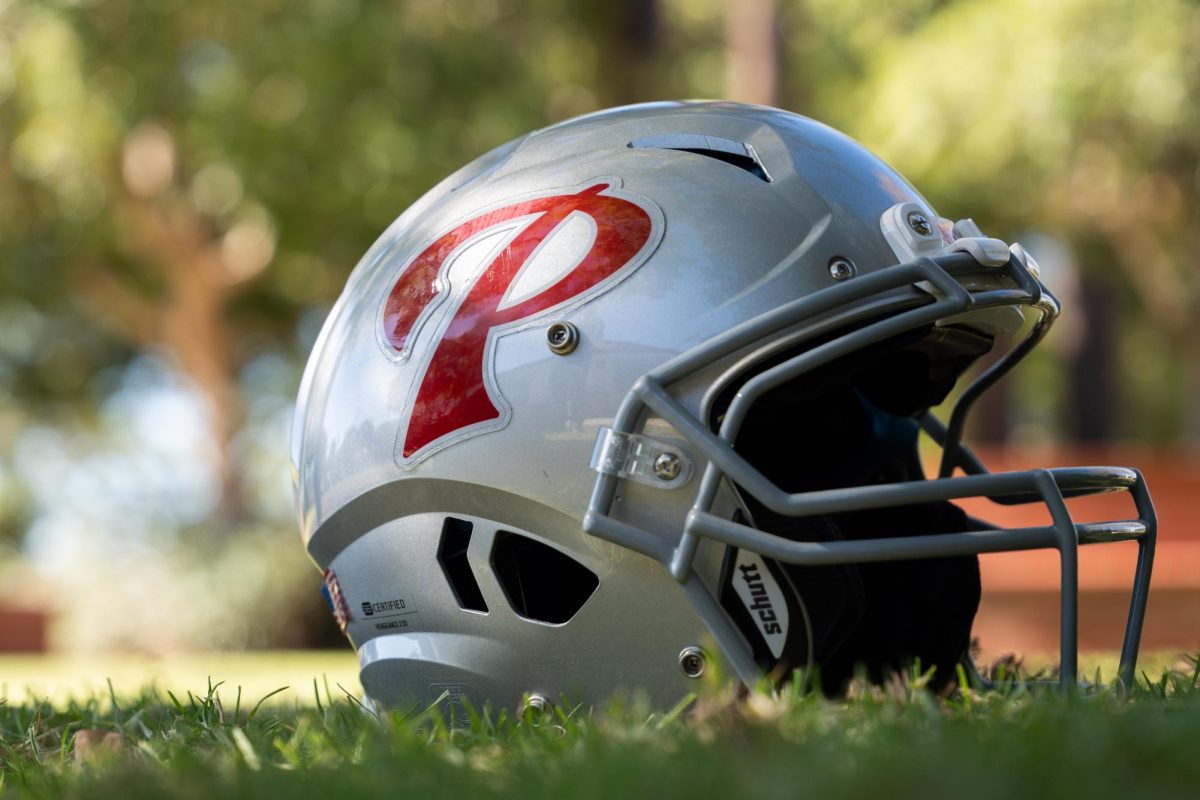A look at who is voting, how are they influenced, and some of the greatest concerns amid the upcoming presidential election.
“Elections belong to the people. It’s their decision. If they decide to turn their back on the fire and burn their behinds, then they will just have to sit on their blisters,” Abraham Lincoln
Politics, voting, and elections have been debatable topics since the birth of the nation. Naturally, the issue of voting, who to vote for, and who is voting is very important.
In the past few years, the entire globe faced multiple world-changing events including a pandemic, wars on multiple fronts, and economic struggles. Elected leaders around the world have made tough decisions that left nations altered forever.
This November, Americans will directly and indirectly choose a
new president for the Oval Office who will lead the U.S. into the unforeseen future.
To Kaila Greeny, a business administration major at Palomar College, having to decide who will become the next president was worrisome.
“We only have two candidates. It makes me not really want to vote… I feel like it’s picking the lesser of two evils, and honestly, I don’t want to pick evil at all,” she said.
Traditionally, voter turnout among college students has been weak. But in recent years, students and younger people in general have begun to vote in higher frequencies.
“Young people are infrequent voters… It’s not unusual for college students to be below 50% in voting… (They’re) busy with their lives: education, jobs, family, friends, dating,” said Gary Castaneda, a political science professor at Palomar College.
However, voter turnout among students was at its all-time highest in the 2020 elections, according to the Institute for Democracy and Higher Education (IDHE). 2020 marked a milestone year for the student electorate, with 66% of all students coming out to vote and of the students registered to vote, a turnout of 80%. It may be that recent national and global events are pulling younger voters into the electorate.
This shift in voting patterns is causing major changes in voter demographics. Ultimately, it is altering the key issues and topics that voters find to be the most important.
But how are the patterns changing and how do younger voters differ from older voters? Well, a recent trend is an increase in female college attendance.
“Women are now attending college more than men which has an effect on voting behavior because of the Gender Gap that started during the Reagan years. Usually, women vote Democratic by +11% (more than men),” said Castaneda.
Another trend is that the majority of younger voters are college-educated.
“One of the great divides in the American electorate, aside from religion, is education,” Castaneda said.
Republicans are known to collect a majority of the religious vote, as Evangelical Christians are the base of the Republican Party. But Democrats’ greatest support comes from the academic sector.
“Typically, people with college educations vote Democratic and those with high school or less vote Republican. That Educational Gap has really become more and more pronounced,” Castaneda said.
That brings up the question: Why are college-educated people voting more Democratic?
Stanley K. Ridgley, a professor at Drexel University’s LeBow College of Business, said that students are more liberal because “brainwashing is widespread on college campuses…the Brainwash is employed exclusively by the progressive Left on college campuses. These persons reject traditional models of education… (and) the idea that there could be reasonable alternatives to the professor’s view.”
Professor Castaneda of Palomar College disagreed.
“Professors wish they had that ability… if (professors could) brainwash their students they would get them to read the class syllabus,” said Castaneda.
Despite the ideological debate, is there any merit to the belief that liberalism pervades the education system?
A 2016 study done by the Econ Journal Watch showed that, among the top 40 American Universities, the ratio of liberal to conservative professors was on average 11.5-to-1.
Samuel J. Abrams, professor of politics at Sarah Lawrence College and a research fellow at the Hoover Institution at Stanford University, and Amna Khalid, associate professor of history at Carleton College, elaborated on these findings in a 2020 article published by the American Enterprise Institute.
According to their article, research on campus climate revealed a decrease in openness to non-liberal viewpoints.
But it also said that people should be careful not to assume that just the ideologies of professors were responsible for shaping campus climate. However, they did find a trend of decreasing willingness to discuss ideological differences and political topics.
“Regardless of whether campus climate is dominated by liberals or conservatives, as long as professors and students are scared to ask certain questions or share their perspectives, the quality of teaching and learning for all is bound to suffer,” said Abrams and Khalid in their article.
Colleges and universities are places where people from all different backgrounds come together to learn.
According to Abrams and Khalid, “This is only possible when vigorous debate and the ability to question, argue, and challenge others is nurtured… Higher education is at a critical juncture and we would do well to heed this call to resurrect, protect, and promote viewpoint diversity for all our sakes.”
Additionally, the Pew Research Center reported in 2016 that over half of people with postgraduate degrees (54%) have liberal political values. And this trend among the college-educated continues to grow.
A professor’s ideology could affect students; however, the question of how much it influences the students’ point of view is still up for debate.
Peter J. Bowman, head professor of political science at Palomar College, said that young voters typically support Democratic candidates because of their alignment with “forgiving student loan debt, climate change action, support for abortion rights, LGBTQ rights, (and) health care expansion…”
“Many of these young people are voters of color who have supported Democratic proposals on immigration path to legalization… support for dreamers, [and] police reform with a focus on addressing systemic racism,” said Bowman.
College is a place where students are exposed to new ideas, begin to explore who they are, and develop their own set of values and perspectives outside of their family units. Their political inclinations, thoughts and discussions about politics, government, and the economy will be shaped by their interactions at college and beyond.
At Palomar College, there is a unique blend of ages from Gen Z (18-27) to Millennials (28-43) and beyond. This creates an interesting dynamic within the Palomar student body where people with different mentalities and beliefs interact with professors and other students to explore the world of politics.

To further examine the Palomar campus climate and the social, political and economic ideologies of students, The Telescope conducted a randomized survey.
Falling in line with the educated and liberal trend, the largest share of respondents, albeit by a small margin, supported the Democratic Party (33%). Following closely was the Republican Party with 28% and 22% identifying as Independent, while the remaining percentages identified as “other” or declined
to state.
The survey also asked respondents to rank political topics on a scale from 1 to 5 (1 being not important at all and 5 being very important).
This uncovered additional information about the voting habits and concerns of Palomar students.
The issues of abortion and immigration had the highest percentages of respondents answering with 5 (very important), followed by gun control, education, economic policy, and Healthcare/Medicare.
Alternatively, climate change, gender equality/gender rights, racial inequality and social security had the most varied responses, with multiple answers across the scale, ranging from very important to not important at all.
Another concern was that most respondents agreed that America was headed in the wrong direction, but all had different reasons why.
When respondents were asked about the greatest challenge America might face in the next four years, the array of concerns became even more widespread.
Preventing wars, solving immigration problems, an economic crisis, violence initiated by MAGA supporters, AI, job security, and the growing division between the rich and poor were just a few of the topics at the top of the list.
Keanu Rios De Sabato, a Palomar College electrical engineering student, said that the issue of housing, the lack of affordable housing and the housing shortage was very important to him.
“Housing is pretty rough. It’s only been getting worse. (And) in my experience… it has a lot to do with the population being older now,” said De Sabato.
He said that since there are fewer young people in the nation and the median age is near 40, young voices aren’t being heard as much as they could be.
When asked her opinion of America’s direction as a whole Ariana Revert, an art student, said she thought America can do better as a society. As a nation, America should focus on “helping our people,” she said.
In regards to American aid to foreign countries such as Ukraine and Israel, Revert said she believed that American relief funds were important but that America “needs to find a balance.”
America has “so many problems that are still not being solved,” she said.
“And before we help other people, we do have to consider… [helping] our people that are really suffering. This is our country and we should be taking care of it,” said Revert.
The current social and political climate is unique, which is another aspect that shapes student ideologies.
Sociology student Dawn Hesse voted for Donald Trump in 2016 and 2020. When she shared this with a professor, the response she received made her feel uncomfortable about discussing her political choices.
“The professor was very upset and bothered by my voting choice and unwilling to hear why I chose to vote the way I did. There was some mild exhortation and chiding for me to explain why I thought Trump was so great,” Hesse said.
“I think people don’t like to say they are voting or who they vote for because of retaliation, intimidation, or fear of being ostracized either in person or on social media,” she said.
In this digital age, the online world of social media plays a huge position in shaping perception. Kaila Greeny spoke about this trend.
“Social media plays a big role in how everything is perceived… Whatever’s on your feed is going to be what you like to see,” she said.
Oftentimes, social media algorithms tailor posts to individual preferences, making certain instances and issues seem more prevalent than they actually are.
“Not everything you see is the truth,” said Greeny.
A growing list of concerns leaves not only students, but Americans as a whole, with just two options: to vote or not to vote.
Federal elections have been sure ways to enact change, but local elections are a good place to start for those seeking to improve their immediate communities. Progress can be made by prioritizing what is most important and being informed about the views candidates hold. Homelessness, state taxes, and housing issues are just a few topics that can be addressed at the state and local levels.
One thing is certain, the election in November will make history and will be watched worldwide like none other before it.
“Someone struggled for your right to vote. Use it”– Susan B. Anthony.




































































